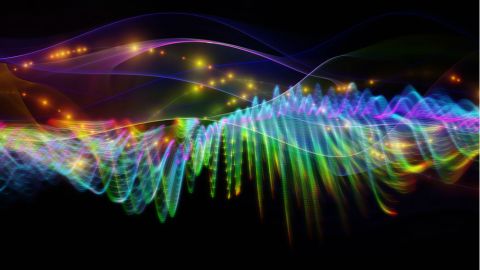A Rainbow Is A Song: The Wild, Curious & Wonderful World of Synesthesia

What’s the Big Idea?
On a late winter day in 1922, the sound of a gun shot resounded with a loud boom in the hills surrounding the house of three-year-old Edgar Curtis. The sound itself wasn’t out of the ordinary, since the Curtises lived near a firing range. What was extraordinary was the question the boy turned to ask his mother: “What is that big, black noise?”
A few days later, when his mother was putting him to bed, Edgar heard the chirping of a shrill cricket and demanded, “What is that little white noise?” For Edgar, low, rhythmic notes were dark in color. High-pitched sounds were pale, and, researchers later discovered, tones in between were variously red, blue, and purple. A rainbow was “a song.”
Edgar Curtis’ story is an early example in the scientific literature of synesthesia, a neurological phenomenon in which one or more sensory modalities are linked. “There are many different forms,” says David Eagleman, a neuroscientist known for his ability to garner important insights into the nature of perception and consciousness through idiosyncratic methods. “Essentially, any cross-blending of the senses that you can think of, my colleagues and I have found a case somewhere.”
Watch our interview on synesthesia with neuroscientist David Eagleman:
“It used to be thought this was very rare,” says Eagleman. “The original estimates were 1 in 20,000, but we now know it’s quite common. Probably up to 4 percent of the population has some form of synesthesia.”
The study of synesthesia has historically been marked by such misconceptions. 19th century romantics and early 20th century surrealists were intrigued, since the impressionistic perceptions of synesthetes seemed to jibe with the generally fluid and emotional sense of reality embraced by serious thinkers of the time. But the rise of behaviorism lead to a dramatic decrease in engagement with the subject.
In the behaviorist framework, synesthetes were seen as especially sensitive to typical memory associations; nothing more, nothing less. Perhaps five was gold simply because you saw it as a child, painted on the side of a fire truck racing through the streets. The number of publications released per decade on synesthesia dropped from about 135 in the 1920’s to about 5 in the 1960’s. (“Before brain scans and before recent research into the brain, people were very reluctant to do any studies… it just seemed so wacky,” explains Siri Husvedt.)
Today, we understand that synesthesia is internal, automatic, involuntary, and unconscious. Neuroscientists like V.S. Ramachandran and Eagleman have radically advanced our knowledge of the phenomenon, using technology and creativity to show that synesthesia is biologically-based, perceptually real, and distinct from either associations or hallucinations.
To conduct the first systematic study of synesthesia, Eagleman and his team at the Laboratory for Perception created a self-administered test and published it online at synesthete.org for all to see. The test went viral and gave them instant access to a global pool of synesthetes.
What’s the Significance?
Among the most common forms of synesthesia are sound –> color, like Edgar Curtis’, and color –> number or grapheme, in which learned sequences such as the alphabet trigger a color experience. Here are the alphabets of two synesthetes, Carol (1) and Karen (2), an artist and language researcher working at MIT:
Less common, but still prevalent, is the linking of color with touch or taste with touch. For example, Richard E. Cytowic, MD and coauthor with Eagleman of Wednesday Is Indigo Blue, recalls being served dinner by a friend who was embarrassed that the roast chicken he’d made was “too round,” despite all his efforts to make it pointy.
Synesthesia is experienced from birth, so synesthetes are often unaware that there’s anything unusual about the way they see the world until it’s pointed out to them. To a synesthete, it’s just self-evidently true that J is purple, as Eagleman says, or that meat feels sharp, or that August is acid green.
The question is whether the atypical sensory experience is the result of “crossed wiring” in the brain, or if it’s the result of a genetically- driven overabundance of neural connections in the brain.
It was recently shown to be heritable, and researchers at the Laboratory for Perception are tracing the genes for it right now. But the consequences of today’s explosion of interest in synesthesia has consequences for more than just the lucky few for whom it runs in the family. Says Eagleman:
It’s a good inroad into understanding how different brains can be perceive reality differently. So, you’re sitting here, your neighbor is sitting here, and you’re both looking at the same thing — yet you’re seeing the world very differently… Most synesthetes, historically, have lived their whole lives and may even die without suspecting that they’re seeing reality differently than someone else, because we all accept the reality presented to us. So synesthesia is a direct way to look at how individual changes can lead to different beliefs about reality.
Are you a synesthete? Take David Eagleman’s test:
Image courtesy of Shutterstock.com/agsandrew





